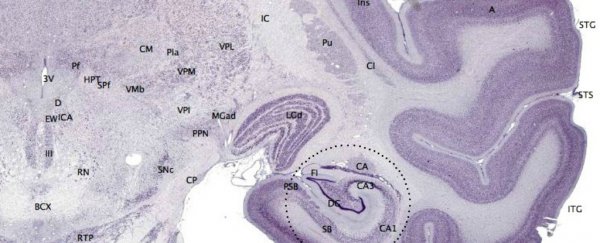Researchers have discovered that girls with brain structures that are more "male typical" are more likely to develop autism than those with "female typical" brains.
The find could help explain why boys are two to five times more likely to be diagnosed with autism than girls.
Autism spectrum disorders (ASD) are neurodevelopmental disorders characterised by impaired social interactions, as well as impaired verbal and non-verbal communication.
But autism is significantly more likely to be diagnosed in boys than girls, so why does this divide exist?
Recent studies have suggested that females have different types of symptoms, which could leave them undiagnosed, but a new study from Goethe University in Germany has found that brain development might also play a role.
"The assumption was that if the male brain were more vulnerable to ASD, then maybe the brains of females with autism have features that resemble the more male-like brain," one of the researchers, Christine Ecker, told Alice Park at Time magazine.
To be clear, male and female brains aren't all that different. But there are certain neurological aspects that are more common in males than females. One of those is a thin cerebral cortex.
To see if this played a role in autism rates, the team took 98 high-functioning adults with ASD (49 male and 49 female), and matched them with a neurotypical control each.
When the researchers performed an MRI on each of the patients, they assessed the thickness of the cerebral cortex – a part of the brain that plays a key role in memory, attention, perception, and awareness.
The cortex, which is typically slightly thinner in males, was found to be thinner in all ASD adults – and the difference in thickness was especially noticeable for females.
"Biological female individuals with a more male-typic pattern of brain anatomy were significantly (i.e. three times) more likely to have ASD than biological female individuals with a characteristically female brain phenotype," the researchers wrote in their paper.
This means that those with a more 'male-like' cerebral cortex were more likely to have ASD.
This could give scientists more insight into why males are diagnosed more than females, but we can't say for sure just yet.
Because of the limitations of the research, the study can't tell us if a thinner cerebral cortex makes you more likely to have ASD, or is just a symptom of it.
"We don't know at this point," Ecker told Time magazine.
Plus this is a relatively small sample size, which means we need more information to assess exactly how accurate this thinner cerebral cortex is in predicting autism.
Ecker's next project hopes to address these questions by looking at the functional changes a thinner cortex has on the male and female brain.
But the findings point to what could be a new avenue for diagnoses in the future, and could help researchers in the future distinguish between the wide array of symptoms that can present across both girls and boys.
"These findings give more credibility that biology of the brain plays a major role in the development of ASD," Matthew Lorber from Lenox Hill Hospital in New York, who was not involved in the research, told UPI.
"It also suggests that when trying to diagnose ASD, it might make sense to examine the cortical regions in the brain."
For a disorder that we're still struggling to understand, research into how it works is always welcome.
The research has been published in JAMA Psychiatry.
